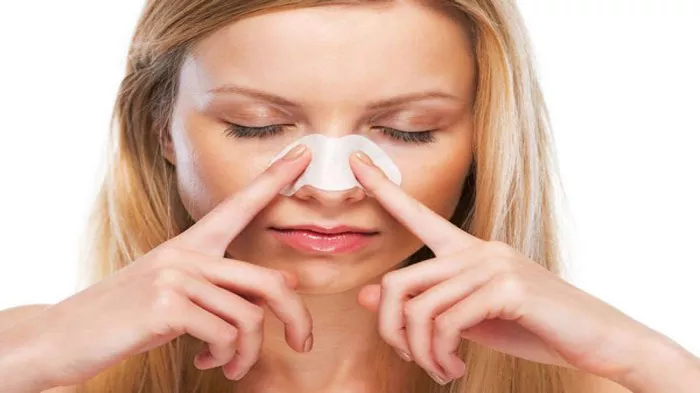Rhinoplasty, also known as a nose job, is a surgical procedure aimed at improving the appearance and function of the nose. Deciding the right time for this surgery is crucial for optimal results and a smooth recovery. This article discusses the six best times to get rhinoplasty, providing insights to help you make an informed decision.
1. After Full Nasal Development
Importance of Nasal Maturity
Rhinoplasty should ideally be performed after the nose has fully developed. For girls, this typically occurs around the age of 15-16, and for boys, it is usually around 16-18. Performing the surgery too early can lead to complications as the nose continues to grow.
Why Wait Until Full Development?
Waiting until full nasal maturity ensures that the changes made during surgery will not be altered by further growth. This stability is crucial for achieving lasting results and avoiding the need for revision surgery.
Signs of Full Nasal Development
Stable Nose Size and Shape: No significant changes in the size or shape of the nose over a year.
End of Puberty: Completion of puberty often signals the end of nasal growth.
Consultation with a Specialist: A consultation with a rhinoplasty specialist can confirm nasal maturity.
See Also: 6 Reasons That May Cause Nose Tip Droop
2. During Academic Breaks
Convenience of Extended Time Off
Academic breaks, such as summer or winter vacations, offer an extended period away from school or college. This time can be used for surgery and recovery without disrupting academic responsibilities.
Recovery Time
Recovery from rhinoplasty typically takes 1-2 weeks for the initial phase, with full recovery taking several months. An academic break provides ample time to heal and return to school with minimal visible signs of surgery.
Advantages of Timing Surgery During Breaks
Reduced Stress: Less stress from academic obligations can aid in a smoother recovery.
Privacy: Time off provides privacy to recover away from the public eye.
Scheduling Flexibility: Easier to schedule surgery without conflicting with academic commitments.
3. Before a Major Life Event
Enhancing Confidence
Rhinoplasty can enhance self-confidence and self-esteem, making it an ideal option before significant life events such as weddings, graduations, or milestone birthdays. Aesthetic improvements can contribute to a positive self-image during these events.
Timing Considerations
Plan the surgery well in advance of the event to allow sufficient recovery time. The initial healing phase lasts a few weeks, but full results may take up to a year to manifest.
Psychological Benefits
Boosted Self-Esteem: Improved appearance can enhance confidence during social interactions.
Positive Mindset: A positive self-image can contribute to a better overall experience during the event.
4. During the Off-Season for Athletes
Reduced Physical Activity
For athletes, choosing an off-season for rhinoplasty minimizes the impact on training and competitions. It ensures a period of reduced physical activity, which is essential for a smooth recovery.
Healing and Recovery
The nose is vulnerable to injury during contact sports. Scheduling surgery during the off-season allows adequate healing time before resuming rigorous activities.
Safety Considerations
Avoiding Re-Injury: Ensures the nose is fully healed before exposure to potential injuries.
Adherence to Recovery Protocols: Adequate time to follow post-surgery care instructions without the pressure of returning to sports.
5. When Health and Lifestyle Are Optimal
General Health
Optimal health is crucial for any surgical procedure. Ensuring that you are in good health before rhinoplasty can reduce the risk of complications and promote faster recovery.
Lifestyle Factors
Non-Smoker: Smoking can impair healing. Non-smokers have better surgical outcomes.
Stable Weight: Maintaining a stable weight ensures consistent results.
Healthy Diet and Exercise: A healthy lifestyle supports the healing process.
Preparation Steps
Medical Evaluation: A thorough medical evaluation ensures you are a suitable candidate for surgery.
Lifestyle Adjustments: Making necessary lifestyle changes before surgery can improve outcomes.
6. When Emotionally Ready
Emotional Preparedness
Being emotionally prepared for rhinoplasty is as important as physical readiness. This involves having realistic expectations and understanding the potential outcomes and limitations of the surgery.
Consultation and Support
Consultation with a Specialist: Discussing your goals and concerns with a rhinoplasty specialist can help set realistic expectations.
Support System: Having a support system in place for the recovery period can provide emotional comfort.
Assessing Emotional Readiness
Realistic Expectations: Understanding that rhinoplasty can enhance but not perfect the nose.
Motivation for Surgery: Ensuring the decision is self-motivated rather than influenced by external pressures.
Preparedness for Recovery: Being ready to follow post-surgery care instructions and cope with the temporary discomfort.
Conclusion
Choosing the right time for rhinoplasty involves considering multiple factors, including physical development, academic or work schedules, significant life events, athletic commitments, health and lifestyle, and emotional readiness. Each of these times offers unique advantages that can contribute to a successful surgical outcome and a smooth recovery process. Consulting with a qualified rhinoplasty specialist can help you determine the best timing for your specific situation, ensuring that you achieve the desired results with minimal complications.
Related topics:

